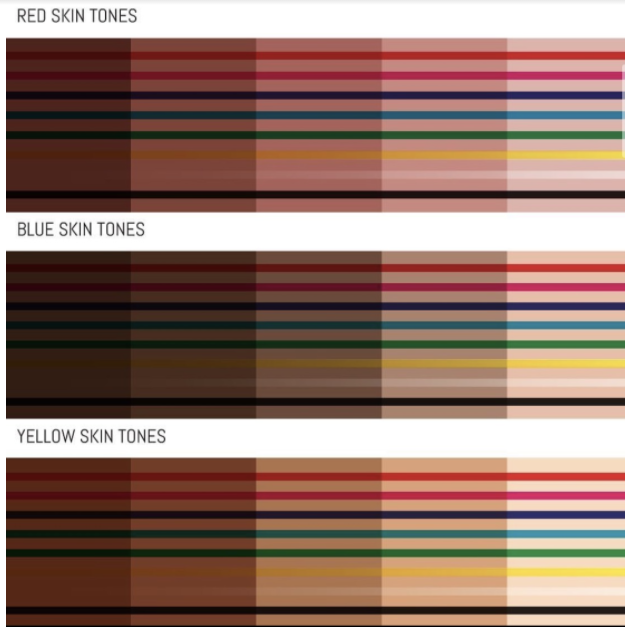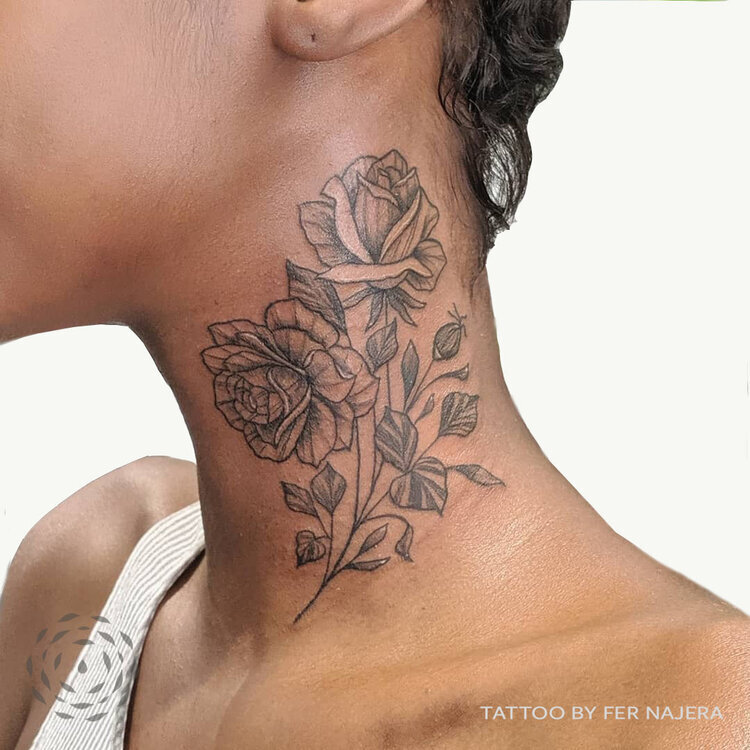As a business that stands with racial equality and justice, we acknowledge our responsibility to listen to BIPOC folx who feel underrepresented in tattoo culture. We strive to learn and take transformative action to ensure that our studio continues to be a safe place for all people to enjoy. This blog is a step in that direction and we hope it can be a resource for clients and artists alike.
So, how is tattooing on dark skin different than tattooing on light skin?
First, It helps to think of skin as a filter made up of many translucent layers. When ink is injected into a person’s skin, the healed tattoo will be viewed through those layers. The more melanin a person has, the darker those layers are, and depending on the tattoo… the more challenging it may be to see the finished product.
Most clients and artists opt to start their tattoo process with a consultation. That way, they can collaboratively discuss the best design, style and colour to suit the clients desired outcome.
When tattooing a client with dark skin, the artist will want to take the following into consideration:
The colour of the stencil applied
Depending on the undertones of the skin, some stencil colours, such as red, could be less visible on darker skin. Blues and purples are usually the best colours to have the stencil show up brightly on the clients skin. This makes the tattoo process easier on the artist, and provides peace of mind to the client, who can clearly see the design mapped out on their skin.
Not overworking the tattoo
A misconception associated with tattooing dark skin is that it tends to scar more easily, or develop keloids. While this isn’t inherently true of all dark skin, it may have been established from artists' tendency to overwork the skin. For example, if the ink colour chosen is close to the skin tone of the client, or light colours aren’t showing through as easily, the artist might overwork the tattoo to create more contrast, thus damaging skin. This can lead to the tattoo not healing well and, possibly creating scarring or keloids.
Selecting the right undertones and warmth of the ink colour
While black lines will show up the best, because they create the most contrast, that is not to say that bright colour tattoos are not possible on dark skin tones. When designing a tattoo for a client with a dark skin tone, the artist will need to take into account the client’s undertones and choose the ink accordingly.
Imagine you have a piece of dark red paper, and you try to paint on it with red watercolour paints. The result? You will see a lot of that paper underneath, and the red won’t show up well, as it blends into the background colour. Finding inks that compliment a client's skin tone and undertones, as well as create effective contrast are key to achieving a colour tattoo that pops.
One way to learn how ink will show up on a dark skin client is a colour test. This is when the artist does a small series of dots or lines on a part of the client's body in various colours. Allow two-four weeks for the tattoo to heal and voila, the artist and client can determine how the ink will react to the skin and move forward armed with that information.
Credit instagram: @mr.lauder
Example of a colour test tattoo. As you can see, the client has yellow undertones, therefore the yellow pigments show up much lighter.
photo by @humblebeetattoo
Photography
Tattoo by resident artist, Fer Najera.
When photographing their work, artists often use studio light and flashes, which wash out the tone of the skin. This can make dark skin look much lighter than it really is, and seemingly contributes to the lack of diversity in portfolios. Sometimes, it can be difficult to determine someone’s skin tone from the picture of their tattoo, but with practice - a photo to showcase the accurate tones of a tattoo on the skin can be achieved!
Tattoo by resident artist, Ashley Horncastle
In the end, it is important to remember that everyone's skin is different, no matter what colour it is. An artist's skill, education and experience is unquestionably important. It comes down to the individual person and their tattoo request.
For an additional resource (more great info on the topic), check out this video by Xavier Price.
A pledge moving forward….
Unfortunately, BIPOC clients have communicated to us that their skin tones are grossly underrepresented in artists portfolios. One contributing factor is in the editing process of tattoo photos. Artists tend to desaturate their tattoo photos in order to boost contrast, take away redness left from the tattoo and highlight the tattoo itself. This practice unfortunately washes out the skin tone of the client. Due to these editing practices, those who are BIPOC could look like they have lighter skin, or even white skin.
We acknowledge that this erases racial identity from the image and make a pledge as a studio to no longer follow this practice.
We hope this has been informative and that people of all colours feel safe and happy with their tattoo experience!
- Written by Kelsey Walker




